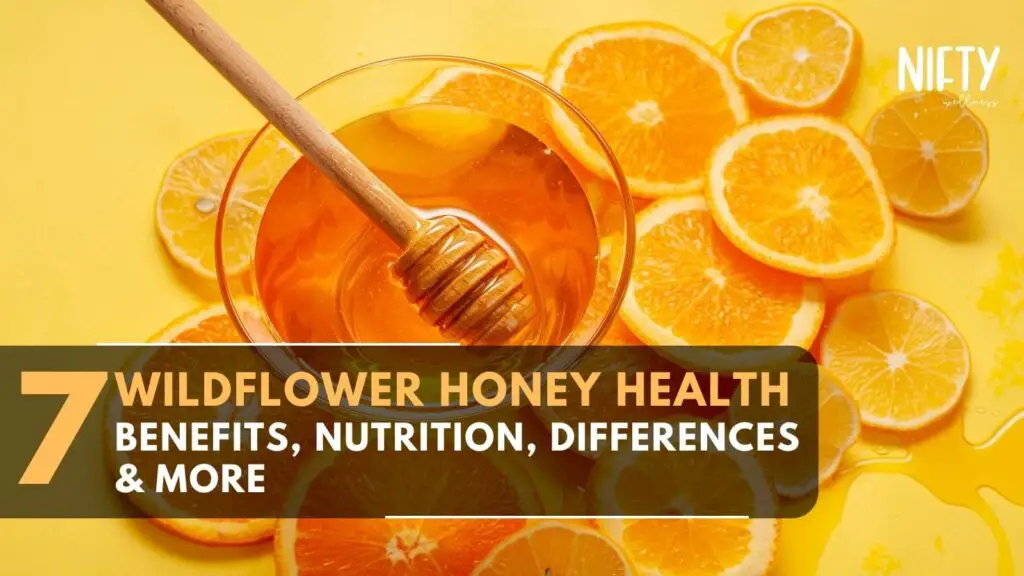When delving into the realm of honey varieties, wildflower honey stands out as a distinctive option. It is essential to understand the subtle distinctions that set wildflower honey apart, particularly in the clover vs wildflower honey battle. Through this exploration, we will unveil the unique characteristics and benefits of wildflower honey, providing an insightful contrast to other honey varieties.
Wildflower honey boasts a range of benefits and is often sought after for its nutritional value. In this discussion, we’ll delve into the key wildflower honey benefits and its rich nutritional content. Furthermore, we’ll assess the differences between wildflower honey and other types of honey, shedding light on the comparative advantages, like wildflower honey vs raw honey, wildflower vs clover honey, and more.
Are questions like, Is wildflower honey good for you? Is Clover honey good for you? Keeping you up at night? Through this exploration, we aim to answer all these questions comprehensively while clarifying the health merits of wildflower honey. In the process, we will emphasize the unique advantages that wildflower honey brings to the table as we discuss the difference between clover and wildflower honey.
By the end of this blog, you will have a thorough understanding of the benefits of wildflower honey, the crucial differences that set it apart from other honey varieties, and the wildflower nutrition value. We hope to guide you in making informed choices when it comes to incorporating this delectable nectar into your dietary regimen.
What Is Wildflower Honey?

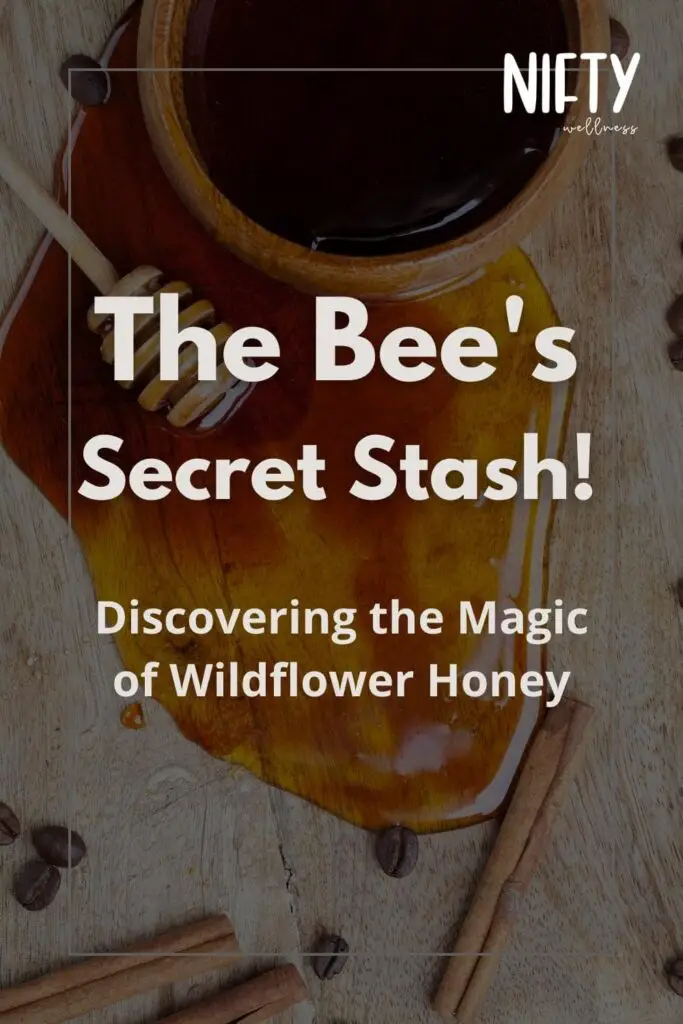
Wildflower honey, also recognized as polyfloral honey, is a type of honey that derives from the nectar of various flowers and blossoms from different species.
Bees collect the nectar as they pollinate wildflowers. The wildflowers that support wildflower honey can be any flower from a plant that grows in fields, forests, and elsewhere.
By definition, a wildflower grows without deliberate cultivation, aka no beekeepers, farmers, or honey producers plant wildflowers. They grow naturally wherever they wish.
Thus, wildflower honey is always different! There are so many types of wildflowers that grow on their own, so there’s no real knowing what a batch of wildflower honey will look or taste like.
(Read about the all-unique avocado honey – in a new tab.)
What Does Wildflower Honey Taste Like?
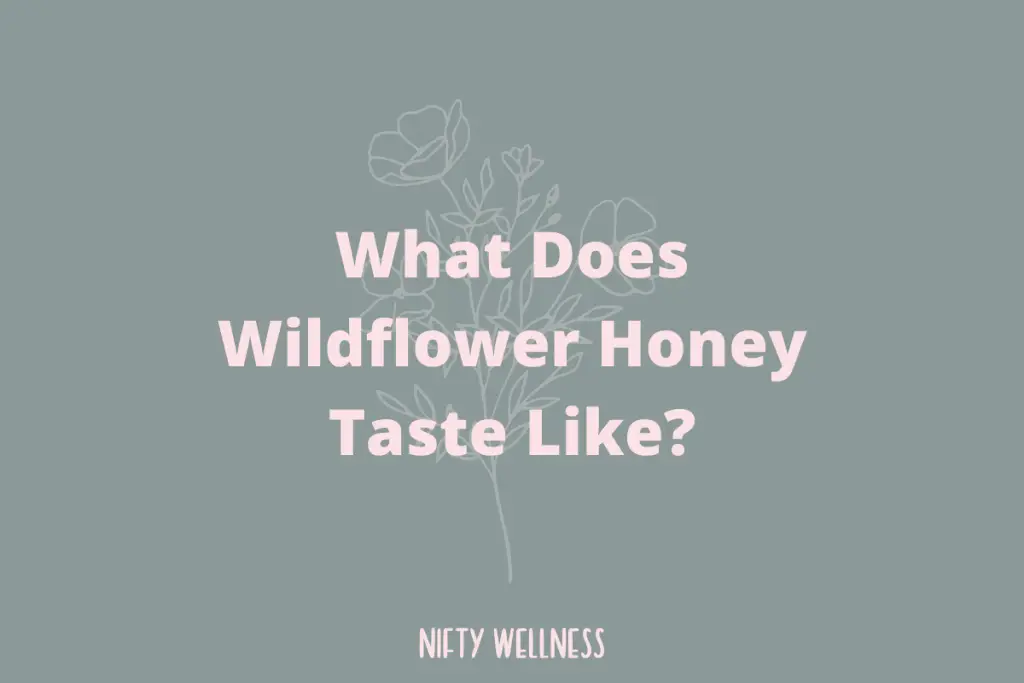
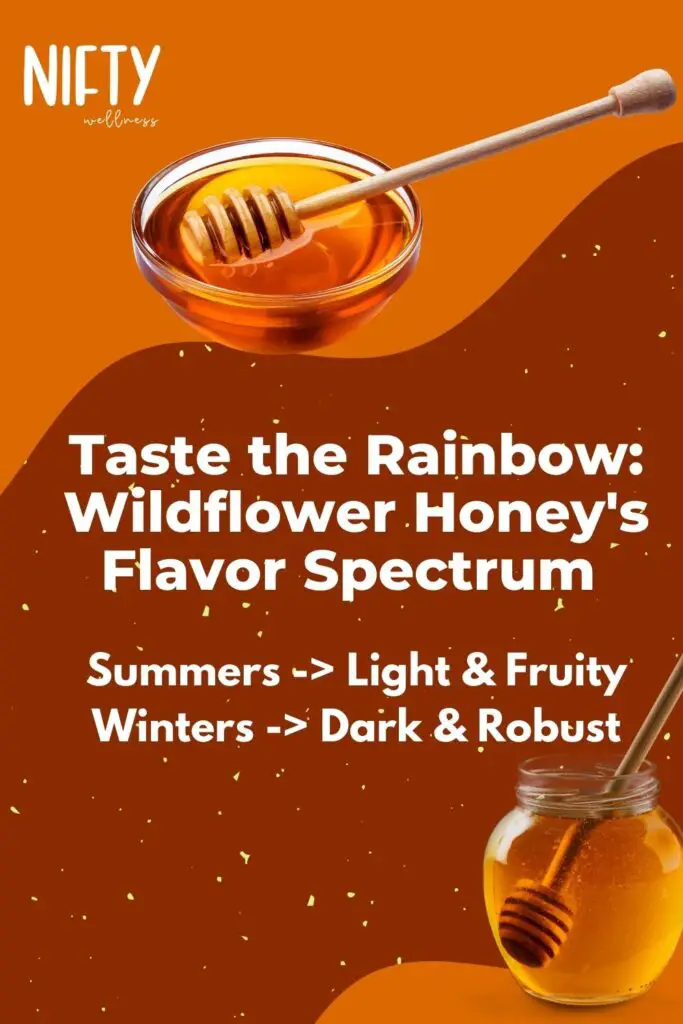
Due to its wild origins, all batches of wildflower honey will be unique. The taste can vary from season to season, ranging from light and fruity to darker and more robust.
In general, the wildflower honey collected later in the season, from late August through October, will have a stronger flavour profile and darker colour than those made in the spring and early summer.
Furthermore, the flavour of wildflower honey is greatly influenced by the local flora that the bees have foraged from. In regions with a diverse range of wildflowers, you may encounter a medley of floral undertones, creating a complex and layered taste.
The sweetness of wildflower honey is often well-balanced with subtle hints of earthiness, offering a harmonious and rich-tasting experience.
Check out our blog Orange Blossom Honey: What Is It, Health Benefits & More. Learn how this natural nectar can enhance your well-being, from soothing throats to boosting energy.
Wildflower Honey Nutrition Values
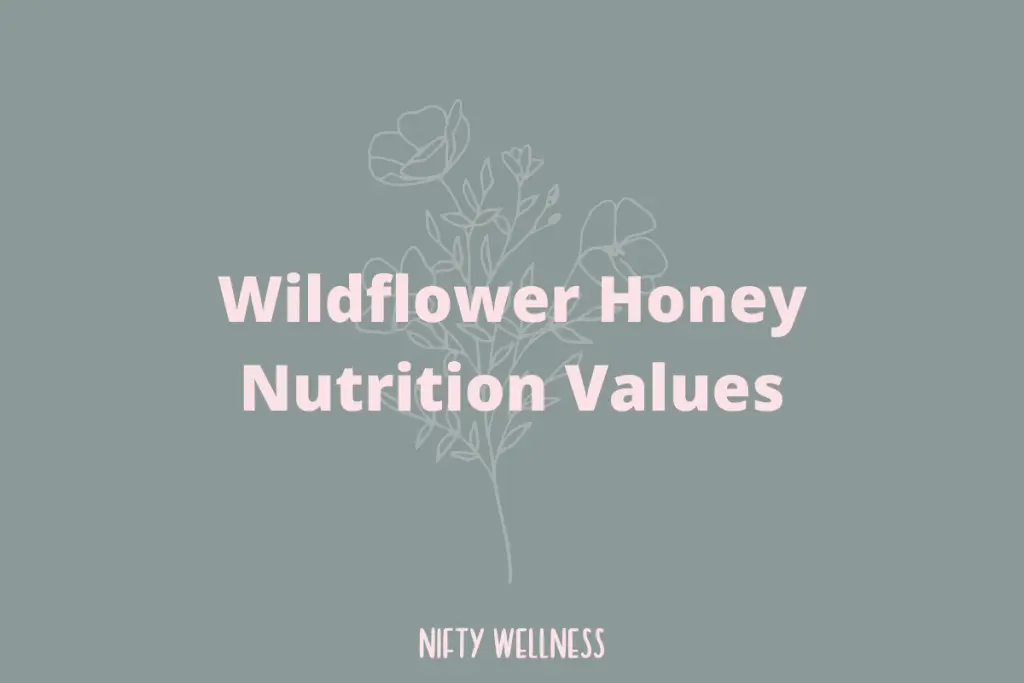
One tablespoon (Tbsp.) of raw wildflower honey contains about 60 calories and 17 grams of carbohydrates that are found in the form of natural sugar.
These natural sugars are digested slowly and boost the body’s energy levels. Honey is mainly composed of sugar and water, in addition to vitamins, minerals, and other nutrients.
Wildflower honey has no protein, zero fat, and virtually no sodium. It is packed full of different micronutrients that aid a person’s health, such as amino acids, antioxidants, and B vitamins.
And, wildflower honey also contains minerals such as calcium, copper, iron, magnesium, potassium, zinc, manganese, and phosphorus.
Health Benefits Of Wildflower Honey

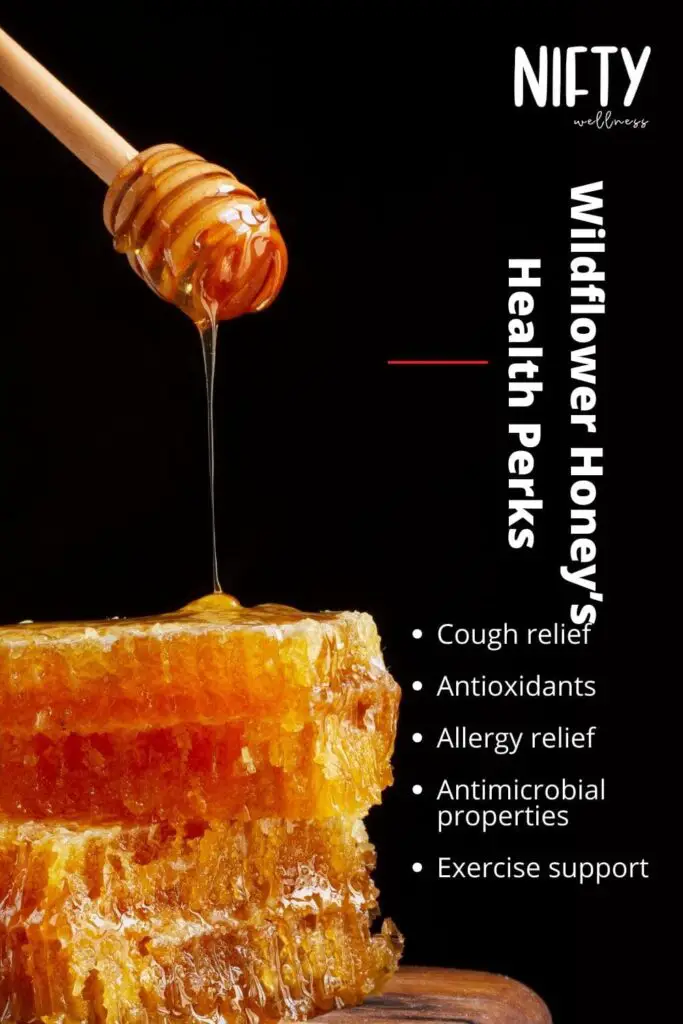
Natural Cough Suppressant
Raw honeys such as wildflower honey make for highly effective natural cough syrups, especially for young children with upper respiratory tract infections.
One study finds that parents favored honey as a treatment to the medication dextromethorphan, stating that it helped with cough frequency, cough severity, and nocturnal cough.
Moreover, the natural sweetness of wildflower honey makes it a palatable remedy for children, making it easier to administer compared to many over-the-counter cough medicines.
Rich In Antioxidants
Wildflower honey is a bountiful source of antioxidants such as bioavailable polyphenols.
These compounds protect the body from oxidation and cellular dysfunction, which, according to a 2012 study, protect against pathological changes that could result in diseases such as heart disease and other chronic ailments.
The abundance of antioxidants in wildflower honey doesn’t just stop at polyphenols. It’s also packed with other beneficial compounds like flavonoids and enzymes. These work together to combat free radicals, reducing oxidative stress on the body.
Seasonal Allergy Relief
Because wildflower honey is collected from the nectar of local wildflowers, many believe it can relieve seasonal allergy symptoms.
According to research, this is likely because the honey contains small amounts of pollen that allow people to build up tolerances.
Wildflower honey is also a natural antihistamine and anti-inflammatory agent that can help soothe allergy symptoms.
Antimicrobial
Natural honeys such as wildflower honey are antimicrobial, meaning that they possess natural antibiotics to protect an organism from infection.
Several bacteria strains known to be sensitive to honey include Escherichia coli, Streptococcus pneumonia, Staphylococcus aureus, Haemophilus influenzae, Salmonella, and more.
Exercise & Athletic Performance
According to the same 2012 study, the carbohydrate content of wildflower honey can be used to sustain energy levels before, during, or after exercise.
This is especially prevalent for individuals who perform high-intensity workouts that regularly need to rebuild and rejuvenate their muscles.
Skin Health
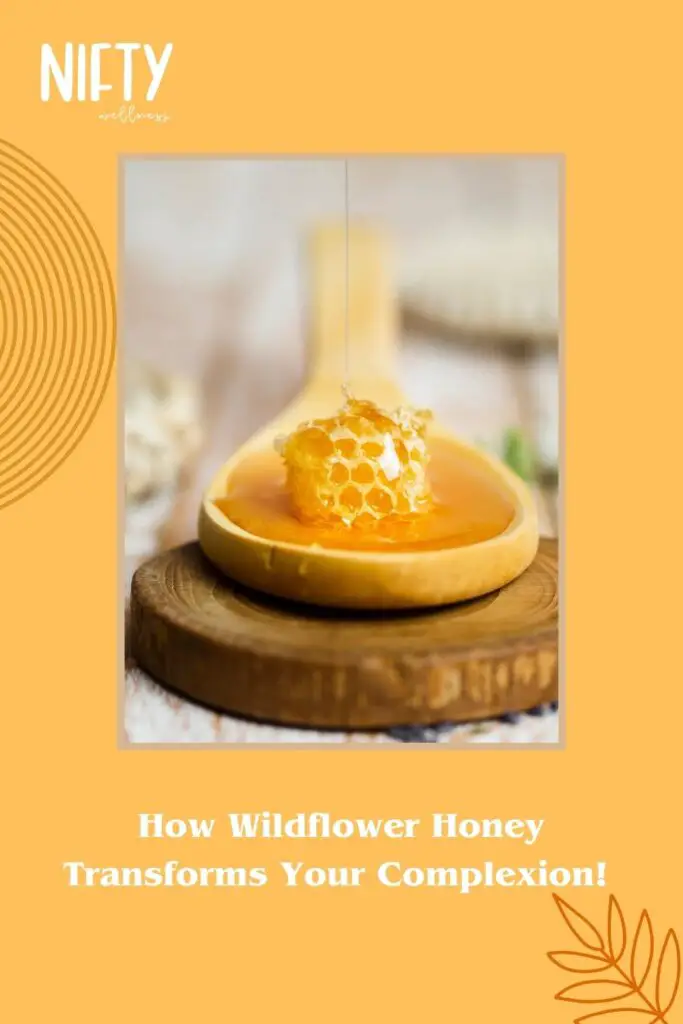
Like other types of honey, Wildflower honey’s naturally anti-inflammatory and anti-bacterial properties can do wonders for calming, soothing, and hydrating the skin.
Wildflower honey is a particularly good hydrator because it is a natural humectant that draws in and retains moisture in the skin.
Wildflower honey is also a wonderful skincare ingredient for sensitive, acne-prone skin as it can balance oil production and calm down hormonal acne flare-ups.
Supports Healthy Digestion
Wildflower honey contains several gut-healthy enzymes that encourage the promotion of sugars and carbohydrates.
Wildflower honey is also a natural prebiotic, which supports healthy probiotic gut-friendly bacteria such as Bifidobacterium that are important for maintaining a healthy, functioning digestive system.
However, research has also found honey to have a laxative effect on some individuals.
Wildflower Honey vs Regular Honey: What’s The Difference?
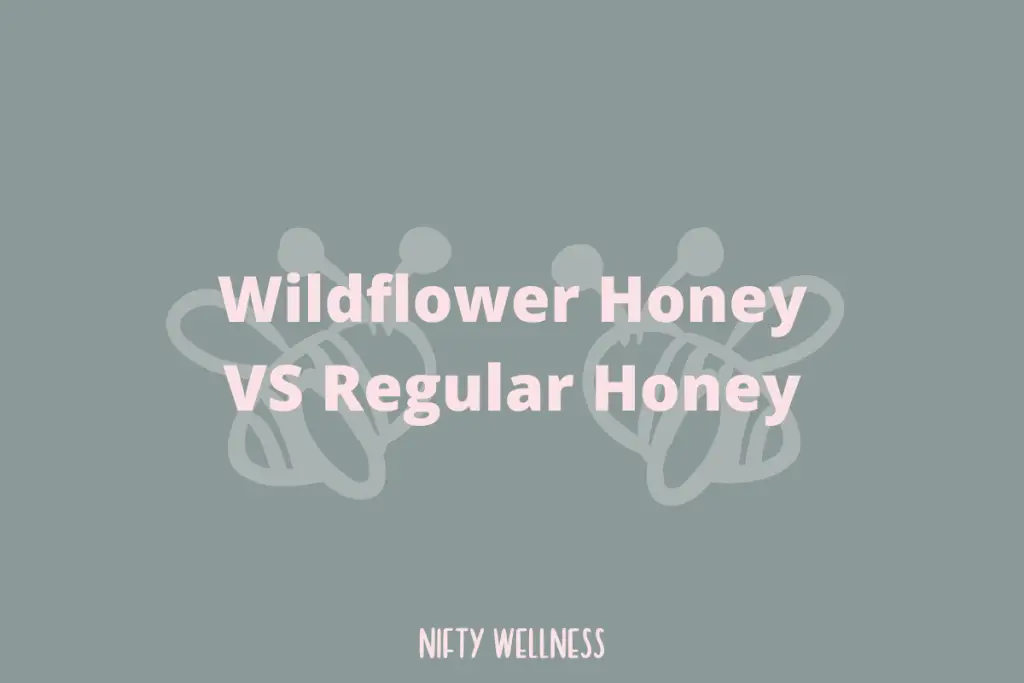
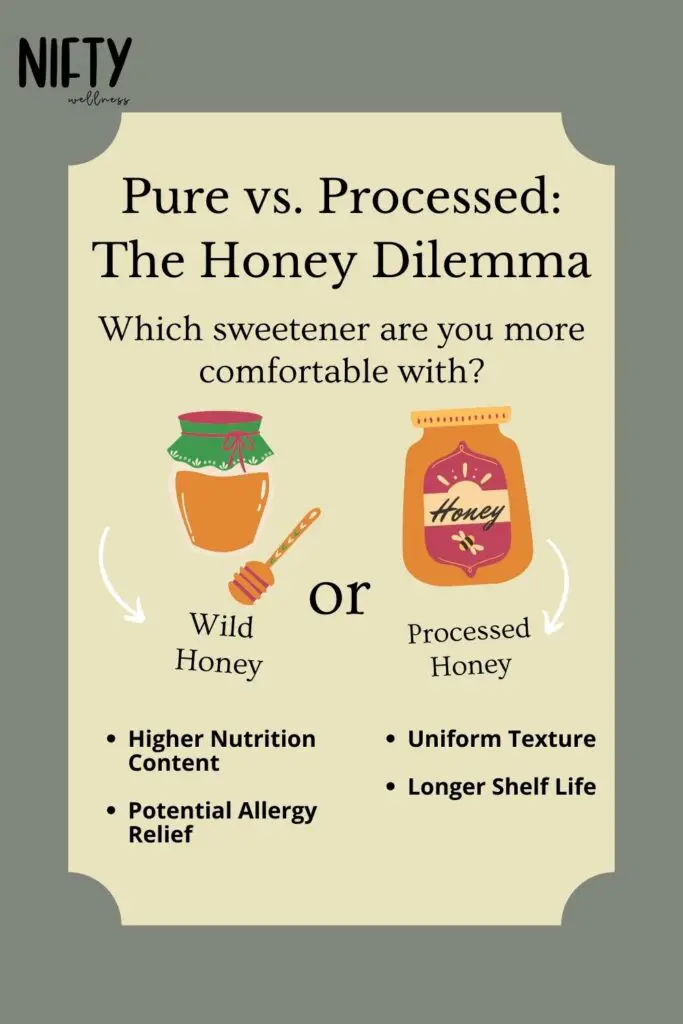
Wildflower honey is a type of raw honey, meaning that it comes directly from beehives and retains all of the natural enzymes, nutrients, antioxidants, and medicinal properties.
Regular processed honey, on the other hand, is pasteurized. Pasteurization is a process that applies high heat to the honey, killing off its nutritional benefits.
In addition, many processed honeys on the market contain other additives such as sugar syrups. This gives processed honey a thin, water-based consistency that can easily be dissolved.
Compared to raw kinds of honey, such as wildflower honey which is thick and does not dissolve easily.
Processed honey is also more transparent and has a light hue. Whereas raw wildflower honey can range from light to darker amber hues.
Wildflower Honey vs Raw Honey: What’s The Difference?
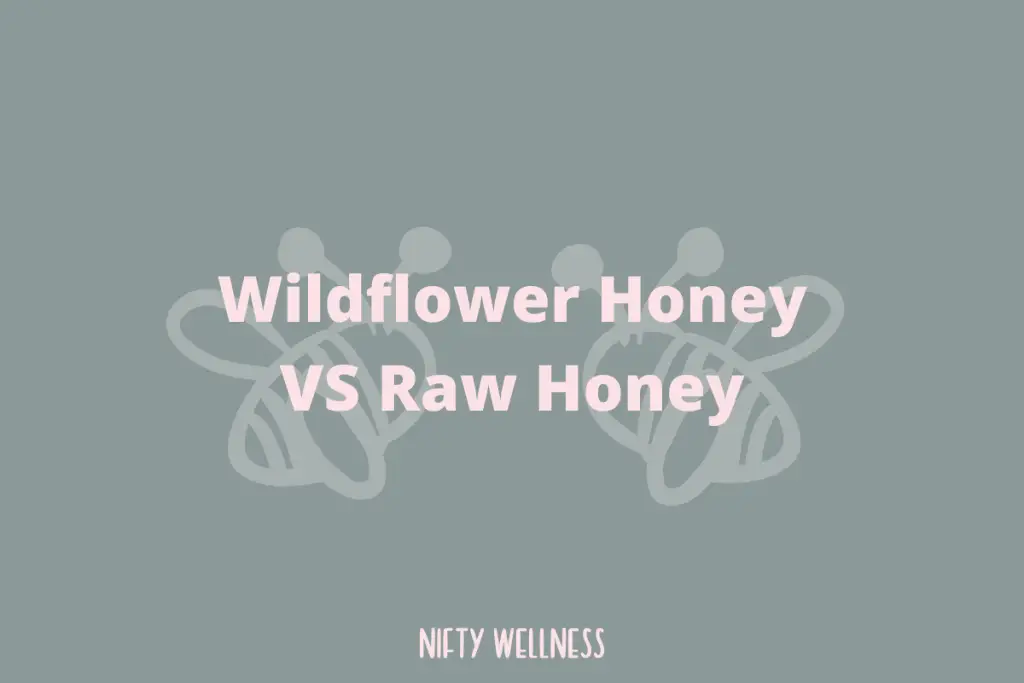
In its simplest terms, raw honey is honey that comes straight from the honeycomb. It contains bee pollen, beeswax, and parts of the hives such as dead bees.
The manufacturers will sift the honey through a filter to remove any extremities. Still, all-in-all, the raw honey will contain most of its natural benefits, such as bee pollen and bee propolis.
Wildflower honey can be produced raw, and often is, to preserve its nutrient complex of antioxidants, vitamins, minerals, and more.
Raw wildflower honey is the best choice for those who want to experience honey’s health benefits, and it is especially beneficial for those who wish to use honey as a natural allergy treatment.
Curious about the benefits of chesa fruits? Read our blog Chesa Fruits: Nutrition & Benefits Of The Infamous Eggfruit. Let’s embark on this enlightening journey, exploring the enriching aspects of chesa fruits together.
Wildflower Honey vs Clover Honey: What’s The Difference?
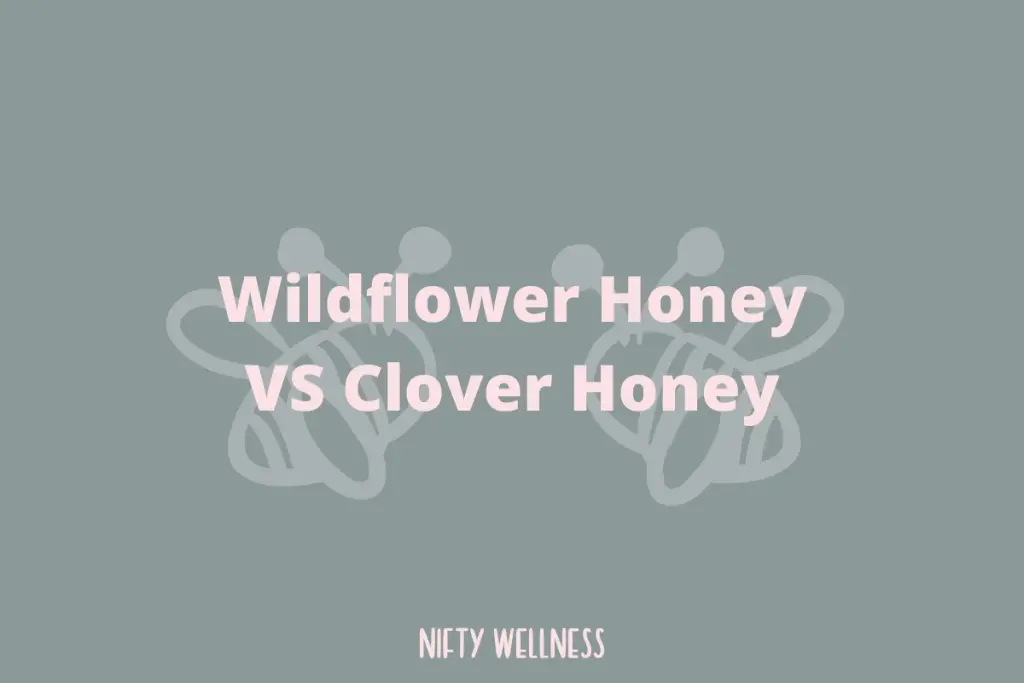
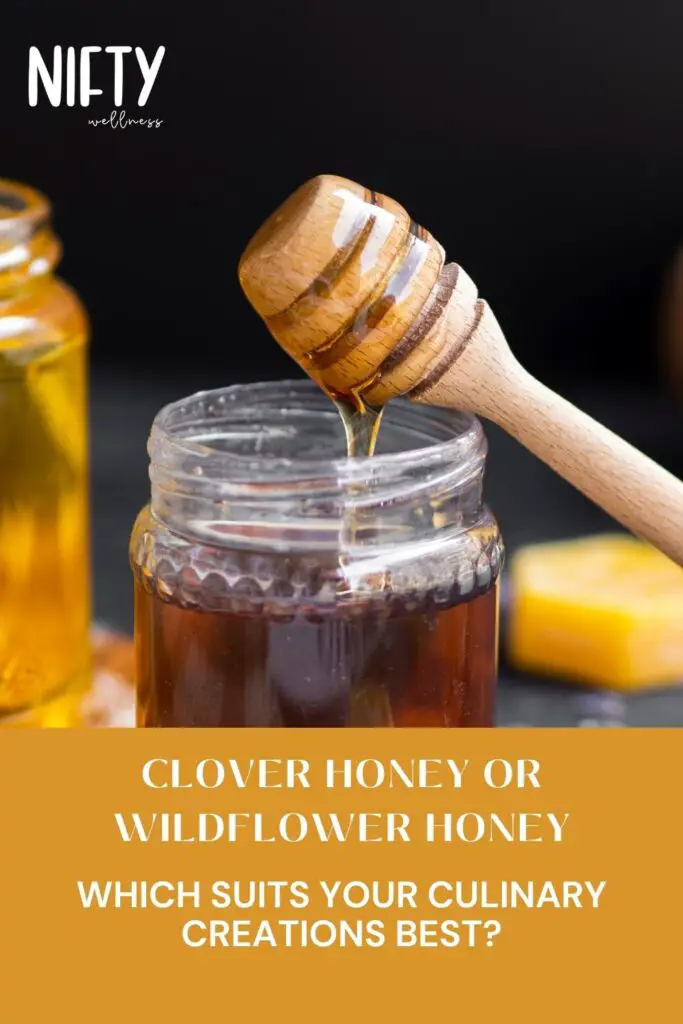
Clover honey is the most common variety of honey and can be found in most grocery stores. Bees collect nectar from the several clover varieties: Dutch, sweet, white blossom, and yellow blossom clovers.
Most of the time, clover honey is a blend of several different clover varieties. Clover honey has a mild taste that can pair with virtually anything.
Clover honey is lighter in color and flavor than wildflower honey. There are usually more floral undertones in wildflower honey due to its polyfloral nature. But clover honey can also have a sweet, semi-floral flavor.
Wildflower honey derives from the nectar of different wildflowers. The taste, aroma, and color vary depending on the season, area, weather, rainfall, and the random nature of where and which wildflowers show up.
Both can be used for cooking, depending on the dish. Wildflower honey will give a more robust flavour.
Conclusion
In the world of honey, wildflower honey shines as a distinctive and natural gem, offering unique characteristics and an array of health benefits. We’ve explored the nuances that set wildflower honey apart from its counterparts, particularly in the context of the clover vs. wildflower honey debate. With its ever-changing flavours and diverse nutritional richness, wildflower honey delights the taste buds while providing a host of health benefits.
Wildflower honey is a versatile delight that’s not only a sweet treat but a source of natural goodness, from its role as a natural cough suppressant to its antioxidant-rich content. It stands out as a symbol of nature’s diversity, offering an exquisite tasting journey filled with health-boosting properties. Whether you’re drizzling it over breakfast, adding it to tea, or indulging in its sweet goodness, wildflower honey enriches both your culinary and well-being experiences. So, make this delectable nectar a part of your daily life and savour the benefits it brings.
Frequently Asked Questions

Is Wildflower Honey Healthy?
Wildflower honey is an extremely healthy honey. It is rich in antioxidants, micronutrients, and enzymes that can prevent disease, aid digestion, and support healthy energy levels.
Is Wildflower Honey Safe?
Wildflower honey is a safe, natural treat that can be used to sweeten food and drink, cure a sore throat, or used on the skin as a topical healing treatment.
What Does Wildflower Honey Mean?
Much like its name suggests, wildflower honey is a polyfloral honey produced from the nectar of a variety of wildflowers
Does Wildflower Honey Come from Bees?
Yes. Wildflower honey comes from bees who pollinate local wildflowers.
What Is The Difference Between Wildflower Honey And Regular Honey?
Wildflower honey is typically raw, unprocessed, and comes straight from the hive. Whereas regular honey (or processed honey) goes through processing that includes pasteurization.
Thus, wildflower honey will have more health benefits than regular honey because it retains its natural bioactive compounds.
Is Wildflower Honey Good For The Face?
Wildflower honey is a great ingredient to use on the face and in skincare as it is a natural humectant that will keep skin hydrated. It is also anti-inflammatory and anti-bacterial, meaning that it can calm, soothe, and treat acne and skin sensitivities.
Can You Use Wildflower Honey As A Face Mask?
Wildflower honey makes a beautiful, at-home face mask treatment that can soothe, brighten, and heal the skin. To use as a face mask, lightly exfoliate and cleanse your skin.
Then apply the honey directly to your face and let sit for up to twenty minutes. Afterward, rinse and apply moisturizer or a facial oil.
What Is Wildflower Honey Good For?
Like other raw types of honey, wildflower honey promotes digestion, provides the body with immune-boosting antioxidants, treats cough and allergy symptoms, and supports healthy energy levels.
Is Wildflower Honey Good For Respiratory Infections?
Research has found that organic raw honey types such as wildflower honey can be a soothing, natural medicine to treat an upper respiratory infection. It can soothe a sore throat and relieve day and nighttime cough.
Does Wildflower Honey Go Bad?
Raw types of honey, such as wildflower honey, have an extremely long shelf life due to their high sugar content, low pH, and natural preservative qualities.
To optimize the shelf life of your wildflower honey, keep the jar or container sealed properly, ideally in a low-lit area that doesn’t fluctuate in temperature often, such as the pantry.
What Is Better Wildflower Honey Or Clover Honey?
In general, both of these natural honeys are wonderful. It really comes down to taste preference when choosing between a natural clover honey versus a wildflower honey.
Clover honey will be lighter and milder, while wildflower honey’s flavor varies depending on the season, climate, etc.
